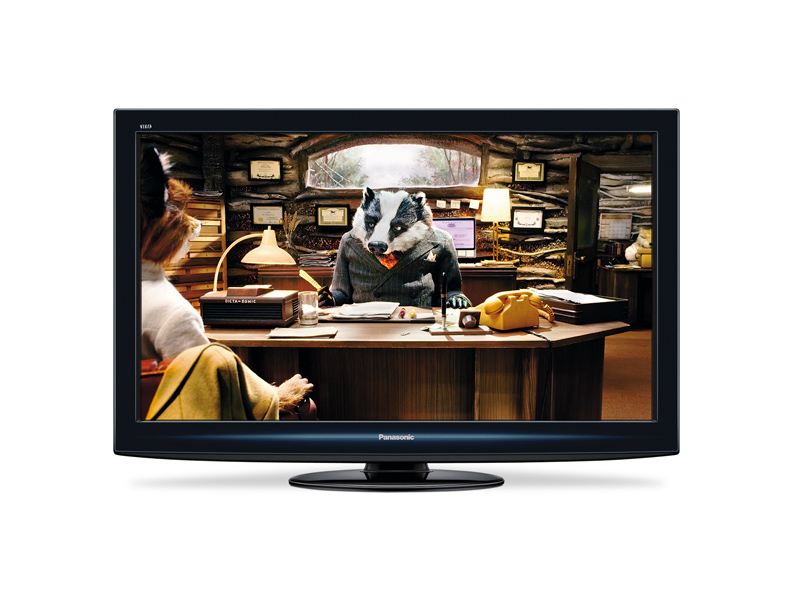Why you can trust TechRadar

When we said at the end of the features section that we were satisfied with the Panasonic P42G20's pictures, we lied.
For actually, we were considerably more than satisfied. In fact, the P42G20's latest NeoPDP engine has at one fell swoop made it one of the most movie-friendly TVs we've ever seen - at least at the sensibly priced end of the market.
The most immediately obvious improvement over last year's NeoPDP models can be seen in the P42G20's colour palette.
Excellent colours
Hues across the spectrum look more accurate while also being more vibrant and dynamic, and the actual spread of that spectrum seems notably larger - not least because Panasonic has done a much better job of reining in plasma's tendency to push green hues too much when showing dark scenes.
It's immensely pleasing, too, to see that the exceptionally natural-looking colours on show with HD footage don't give way during standard def viewing to nearly as many colour errors as we noted with last year's G10 and lower Panasonic plasmas.
Standard definition pictures still initially looked a little softer than we'd like, it has to be said. But then we spotted a new Resolution Enhancer feature tucked away in one of the P42G20's sub-menus, and the mid setting of this turned out to do a very respectable job of sharpening standard definition up without making it look noisy.
Sign up for breaking news, reviews, opinion, top tech deals, and more.
There's no need to worry about any softness while watching HD, though. For while Blu-ray and Sky HD pictures look a little less aggressively gritty on the P42G20 than they do on some of the best LCD sets, they actually look much more natural for it, while still delivering oodles of the lovely fine detailing that makes HD so essential.
Excellent motion
Plasma doesn't suffer with the response time issues of LCD technology either, and so the blurring and softening of moving objects we often see with LCD screens is pretty much entirely absent on the P42G20, helping its sharpness stay constant.
The combination of 600Hz and Panasonic's Intelligent Frame Creation processing also ensures that camera pans look silky smooth, with practically none of the usual plasma judder.
All this and we haven't yet mentioned the P42G20's truly outstanding performance with dark scenes. It manages to produce a black colour that's almost devoid of the usual grey mist that affects all LCD TVs and even most plasma TVs to some extent, leaving dark scenes looking remarkably believable, rich and immersive.
Key to how good dark scenes look on the P42G20, too, is the fact that its NeoPDP technology means it doesn't have to dim the overall brightness level drastically to achieve a deep black colour, as happens with LCD TVs. This means that you can still see loads of subtle shading and shadowy details in the P42G20's darkest corners, rather than the hollow, flat look often found with LCD's darkest colours.
Brilliant contrast
Yet more good news evident during dark scenes finds the P42G20's backlight levels looking totally consistent from one corner of the screen to the other. There's no sign of the common LCD problem whereby some parts of the picture in dark scenes look unnaturally brighter than others.
Finally - and this is a major point for anyone with a big family or small living room - the P42G20's pictures don't lose contrast or colour when watched from even quite severe angles. Compare this with most LCD TVs, which lose significant contrast and brightness if watched from angles as little as 40 degrees off axis.
Really the only significant negative point we can raise about the P42G20's pictures is that they're not as aggressively bright as those of your average showboating LCD TV, and so might look a little flat in really bright living rooms. Otherwise, it's all good. Especially with HD movies.
Current page: Panasonic TX-P42G20: Picture quality
Prev Page Panasonic TX-P42G20: Features Next Page Panasonic TX-P42G20: Sound, value, ease of use
John has been writing about home entertainment technology for more than two decades - an especially impressive feat considering he still claims to only be 35 years old (yeah, right). In that time he’s reviewed hundreds if not thousands of TVs, projectors and speakers, and spent frankly far too long sitting by himself in a dark room.
